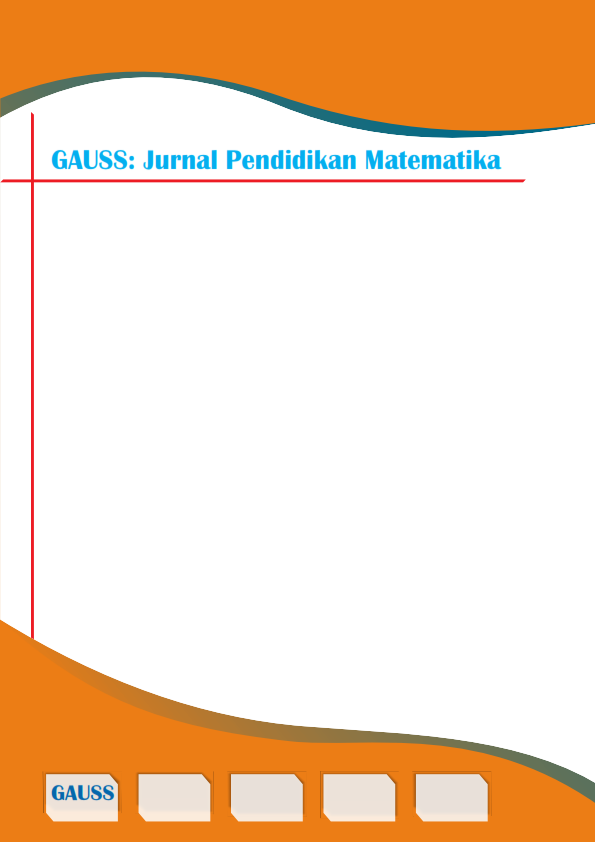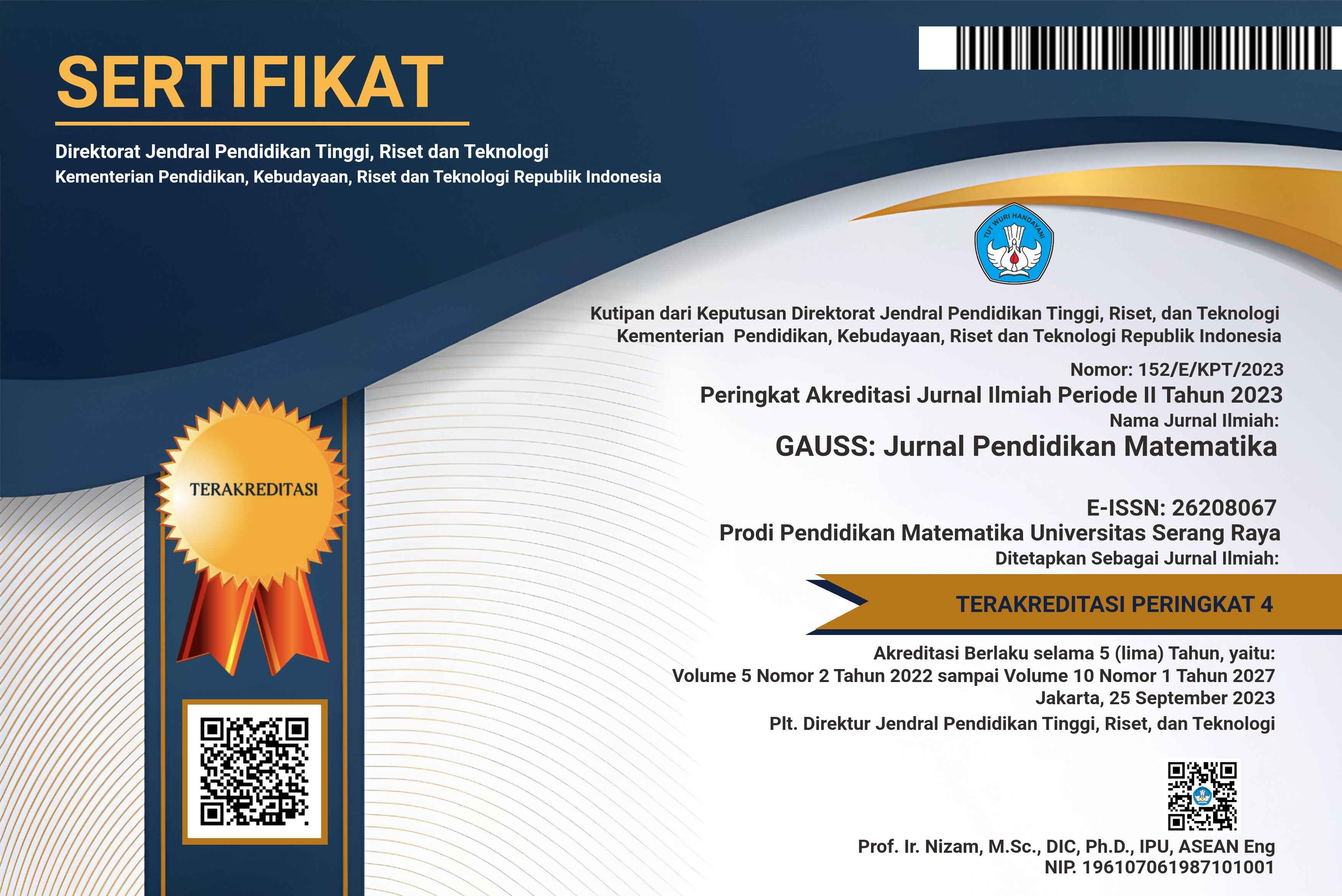Systematic Literature Review: Bahan Ajar dalam Peningkatan Kemampuan Literasi Matematis
Systematic Literature Review: Teaching Materials in Improving Mathematical Literacy Ability
DOI:
https://doi.org/10.30656/gauss.v7i2.9060Abstract
Abstrak
Penelitian ini bertujuan untuk mendeskripsikan hasil temuan mengenai bahan ajar dalam peningkatan kemampuan literasi matematis meliputi distribusi penelitian berdasarkan jenjang pendidikan, materi yang diterapkan dalam penelitian, metode yang digunakan dalam penelitian, indikator yang diaplikasikan dalam penelitian, dan jenis bahan ajar dalam peningkatan kemampuan literasi matematis. Penelitian ini menerapkan metode Systematic Literature Review (SLR). Sampel penelitian menggunakan 28 artikel dari database Scopus dan Google Scholar yang dipublikasi dari tahun 2019 sampai 2024 dan memenuhi kriteria inklusi. Pengumpulan dan analisis data mencakup delapan tahapan yakni perumusan masalah penelitian, pengembangan protokol tinjauan, pencarian literatur, penyaringan berdasarkan kriteria inklusi, penilaian kualitas penelitian, ekstraksi data, analisis data, serta pelaporan hasil temuan. Melalui metode SLR ditemukan subjek penelitian yang paling banyak dipilih adalah sekolah menengah pertama, materi yang paling banyak diterapkan dalam penelitian adalah statistika, metode yang paling banyak digunakan dalam penelitian adalah metode pengembangan, indikator kemampuan literasi matematis yang paling banyak diaplikasikan dalam penelitian adalah formulate, employ, dan intercept, jenis bahan ajar dalam peningkatan kemampuan literasi matematis diantaranya modul atau e-modul, LPKD atau E-LKPD, bahan ajar berbasis teknologi, instrumen soal, buku teks, video, dan komik. Penelitian mengenai bahan ajar dalam peningkatan kemampuan literasi matematis diperoleh hasil yang beragam ditinjau dari aspek merumuskan, menerapkan, menginterpretasikan masalah.
Kata Kunci: Bahan Ajar, Kemampuan Literasi Matematis, SLR
Abstract
This study aims to describe the findings of teaching materials in improving mathematical literacy ability, including the distribution of research based on educational level, materials applied in research, methods used in research, indicators applied in research, and types of teaching materials in improving mathematical literacy ability. This study applies the Systematic Literature Review (SLR) method. The research sample used 28 articles from the Scopus and Google Scholar databases published from 2019 to 2024 and met the inclusion criteria. Data collection and analysis includes eight stages, namely the formulation of research problems, the development of review protocols, literature search, screening based on inclusion criteria, assessment of research quality, data extraction, data analysis, and reporting of findings. Through the SLR method, it was found that the most widely chosen research subjects were junior high schools, the most widely applied material in the research was statistics, the most widely used method in the research was the development method, the most widely used indicators of mathematical literacy ability in the study were formulate, employ, and intercept, the types of teaching materials in improving mathematical literacy ability included modules or e-modules, LPKD or E-LKPD, technology-based teaching materials, question instruments, textbooks, videos, and comics. Research on teaching materials in improving mathematical literacy ability obtained various results from the aspects of formulate, employ, and intercept problems.
Keywords: Teaching Materials, Mathematical Literacy Ability, SLR
Downloads
Published
Issue
Section
License
Copyright (c) 2024 Rohimatul Hayati, Novaliyosi, Maman Fathurrohman, Hepsi Nindiasari

This work is licensed under a Creative Commons Attribution-NonCommercial-ShareAlike 4.0 International License.
Authors who publish articles in GAUSS : JURNAL PENDIDIKAN MATEMATIKA agree to the following terms:
- Authors retain copyright and grant the journal the right of first publication with the work simultaneously licensed under a Creative Commons Attribution-ShareAlike 4.0 International License that allows others to share the work with an acknowledgment of the work's authorship and initial publication in this journal.
- Authors are able to enter into separate, additional contractual arrangements for the non-exclusive distribution of the journal's published version of the work (e.g., post it to an institutional repository or publish it in a book), with an acknowledgment of its initial publication in this journal.
- Authors are permitted and encouraged to post their work online (e.g., in institutional repositories or on their website) before and during the submission process, as it can lead to productive exchanges, as well as earlier and greater citation of published work (See The Effect of Open Access).




